Experiential learning for employee development (examples, benefits, and strategies)
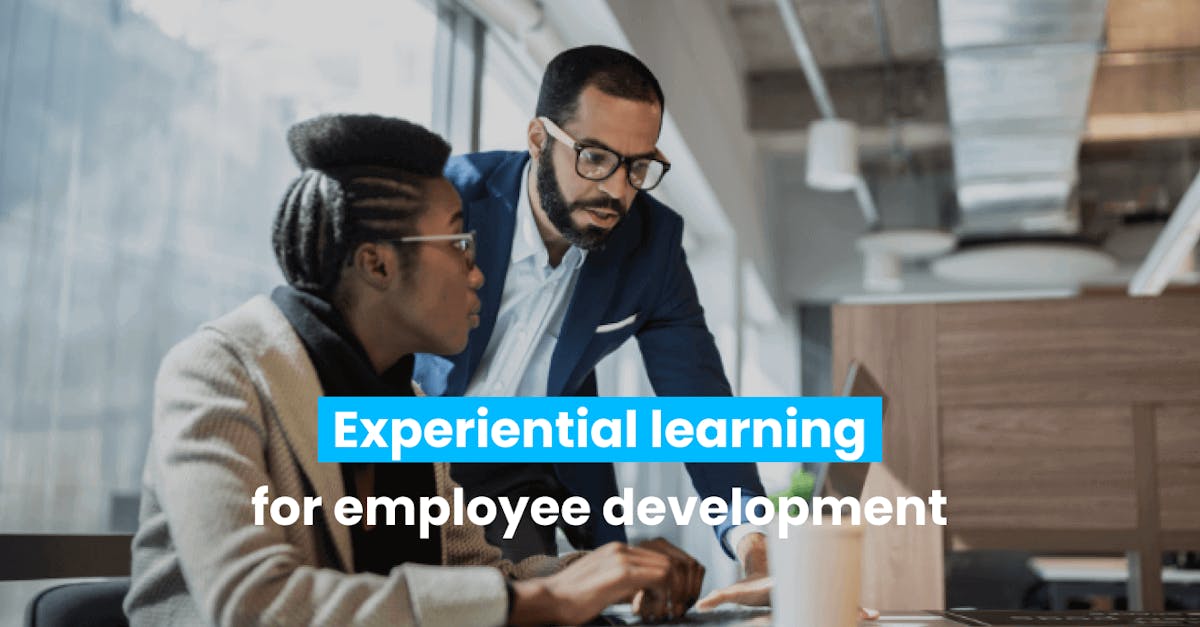
Today, learning is more than just sitting through lectures or reading textbooks. It needs to be engaging and immersive, where learners are actively involved throughout the learning process. That’s what experiential learning is about.
In this article, we’ll walk you through the ins and outs of experiential learning, along with some examples, benefits, and useful strategies for an effective learning experience in the context of employee development.
What is experiential learning?
Experiential learning is about diving into real-life experiences to grasp new concepts and develop practical skills. Simply put, the definition of experiential learning is learning by doing.

David Kolb’s experiential learning theory breaks down the learning process into four stages: feeling, watching, thinking, and doing.
- Concrete experience (feeling) - learners get involved in practical activities or real-life situations to gain firsthand knowledge.
- Reflective observation (watching) - learners take a moment to think about and analyze the experience while considering the thoughts and emotions that came from it.
- Abstract conceptualization (thinking) - learners connect what they’ve experienced with what they already know, forming new ideas and viewpoints.
- Active experimentation (doing) - learners put their reflections into action by trying out new approaches, experimenting with different strategies, and applying what they’ve learned in real-life situations.
Embracing this approach allows your learners to gain knowledge and develop the practical skills they need to thrive in the professional world.
Examples of experiential learning activities at work
Experiential learning isn’t a new concept in the workplace at all. It’s rather a go-to method, from onboarding employees to training them. Here are some examples of experiential learning activities commonly implemented at work:

- Internships and on-the-job training,
- job shadowing,
- simulations and role-playing,
- team-building activities,
- project-based learning,
- case studies,
- cross-functional projects,
- workshops and seminars,
Benefits of experiential learning in professional development
You can count on experiential learning to offer benefits that go beyond your traditional training methods. Let’s explore how it can benefit your employees.

1. Improved practical experience
Experiential learning allows your learners to bridge the gap between theory and practice. By applying their knowledge in real-life situations, they develop practical skills and gain a deeper understanding of how concepts translate into the workplace.
2. Enhanced problem-solving skills
Through this approach, your learners can encounter diverse challenges that’ll prompt them to engage actively in finding solutions. This process helps them develop critical thinking skills and adaptability, so they can approach any problem at work from multiple angles.
3. Increased engagement and motivation
Hands-on experiences and active participation can make your employees’ career growth journey exciting and engaging. Experiential learning sparks curiosity and motivation and promotes a sense of ownership over the learning process. These can lead to higher levels of engagement and knowledge retention, which are necessary to achieve better results for your company.
4. Enhanced collaboration and teamwork
Experiential learning often involves collaborative projects and group activities. Letting your employees work with their colleagues can hone their communication, teamwork, and interpersonal skills. This results in a collaborative and inclusive learning culture.
5. Ongoing growth and development opportunities
You can give immediate feedback on your team’s performance, which should allow them to reflect on their actions, identify areas for improvement, and make adjustments in real time. This feedback loop promotes continuous growth and development.
7 Useful strategies for implementing experiential learning in training programs
When it comes to boosting employee development and organizational growth, applying the right experiential learning strategies in the workplace can make a real difference. Here’s how you can bring experiential learning effectively into your training programs:
1. Design meaningful and structured training programs
Make it your mission to create experiences that are engaging, practical, and aligned with your employees’ individual development and your organizational goals.

- To start, clearly define the specific knowledge, skills, or behaviors that your training program aims to develop or improve. You can do this effectively by setting SMART learning objectives.
- Structure the training program in a logical sequence, slowly building from foundational knowledge and skills to more complex tasks or concepts.
- Tailor activities that closely resemble real work scenarios so your employees can practice their skills hands-on and apply what they’ve learned directly to their job roles.
2. Gamify the learning experience
Gamification creates a dynamic learning environment that promotes healthy competition at work. You can encourage your employees to actively participate and engage with these tips:

- Design interactive and visually appealing interfaces or game-based elements.
- Introduce levels or stages that your learners can advance through as they complete learning tasks.
- Add a system for points and badges to recognize progress and achievements.
- Create leaderboards or scoreboards to add a bit of friendly competition.
- Offer virtual or tangible rewards, such as certificates or small incentives, for reaching milestones or demonstrating proficiency.
- Implement team-based challenges or collaborative games.
3. Foster social learning opportunities
Social learning encourages employees to learn from each other through collaboration, discussions, and knowledge sharing. Here’s how you can maximize this strategy:

- Create and facilitate discussion forums or online communities where your employees can share insights and ask questions for each other.
- Encourage peer mentoring or coaching programs so experienced employees or team leaders can guide and support their members.
- Organize virtual or in-person group activities, projects, or networking events.
- Give opportunities for your employees to present their work or ideas to their peers for feedback and discussion.
- Implement buddy systems where learners can partner up and learn from each other throughout the training program.
- Use collaborative tools or platforms for real-time collaboration and document sharing.
4. Integrate online and offline learning experiences
Provide flexible learning opportunities that cater to your employees’ individual needs and preferences, so they can have a well-rounded and comprehensive learning experience.

- Mix different approaches, such as e-learning courses for self-paced learning, virtual classrooms for interactive online sessions, and in-person workshops for hands-on activities.
- Offer a variety of learning formats, like videos, podcasts, or interactive modules, to accommodate different learning preferences.
- Allow for flexible scheduling so your team can balance their learning commitments with their work responsibilities.
- Opt for mobile-friendly learning platforms or apps for on-the-go access to learning materials.
5. Incorporate reflection sessions
Set aside time for your employees to reflect on their learning experiences. You can facilitate individual or group discussions where they can share insights and explore ways to apply their newfound knowledge to future tasks.

- Provide prompts or guiding questions to encourage your employees to think critically about their experiences and connect them to broader concepts or principles.
- Encourage them to keep a reflective journal or document their thoughts and observations throughout the program.
- Give feedback and insights during these sessions to help deepen your employees’ understanding of their newfound knowledge.
6. Assess and evaluate learning outcomes
In experiential learning, it’s important to monitor how the learning process impacts your employees’ performance and skill development.

- Use performance metrics and assessment tools to accurately measure their understanding and application of the learned concepts. It can be done through quizzes, projects, or demonstrations.
- Consistently monitor and track your team’s progress throughout the program.
- Analyze and interpret assessment data to identify trends, strengths, and areas that need additional support, improvement, or intervention.
7. Create a supportive learning environment
Employees feel valued and motivated to learn more when they’re supported. To achieve this, start by setting up a culture of respect, inclusivity, and open communication so everyone feels comfortable expressing their thoughts and ideas.

- Establish clear guidelines and expectations for workplace behavior.
- Recognize and appreciate their unique perspectives, experiences, and contributions.
- Offer relevant materials, job aids, or online resources that address individual learning needs or challenges. It’s a great way to support further learning and reinforcement initiatives.
- Make yourself available for your employees’ questions and concerns. Let them know they’re being heard.
Create effective experiential learning programs with EdApp
Employee training can be quite difficult to carry out without the proper tools at your disposal. To aid your teams’ professional development, it’s only right that you give them the best possible resources using smart training tools like EdApp.
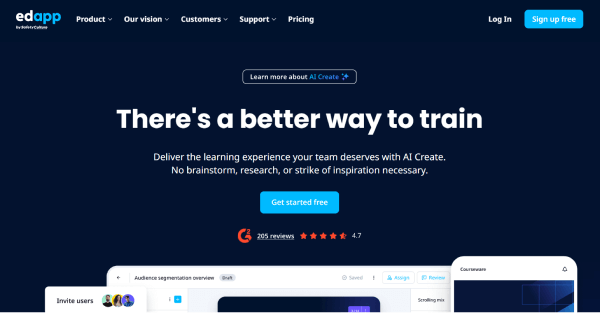
EdApp is a free online learning platform for business that can help you grab your employees’ attention and get them actively involved in training exercises. Through the platform, you’ll be equipped with essential tools to create an interactive learning experience for your teams. That includes:
Gamification
To make your experimental learning activities engaging and immersive, take advantage of EdApp’s gamification tools. Here, you can incorporate interactive games, set up a points system, and create custom leaderboards and achievement badges. Your learners will also have the chance to exchange their points for tangible rewards.
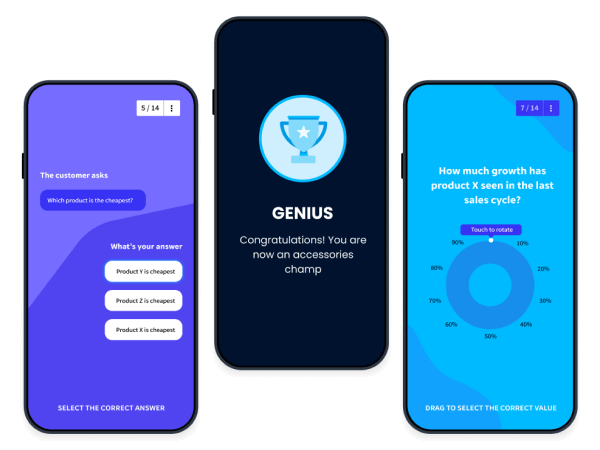
Social and peer learning
With EdApp’s social and peer learning features, you can create an interactive and collaborative environment where your learners can connect, share ideas, and learn from each other. You can use discussions so they can engage in forum-style conversations or assess their understanding with assignments.
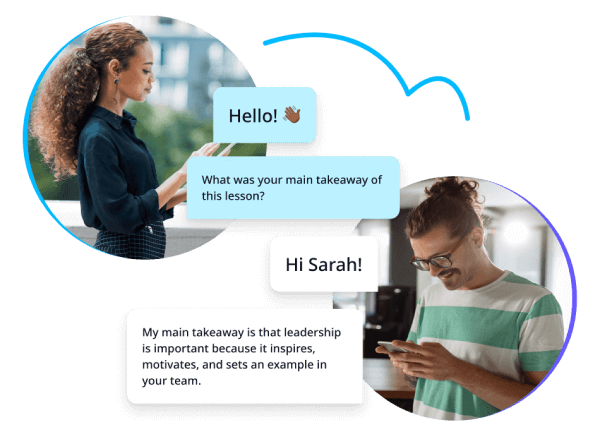
Blended learning
The great news is that all these immersive learning features are adaptable to both hybrid and blended learning setups. You can use the platform for in-person attendance and practical assessments, or have your teams gather in a virtual classroom. EdApp allows you to have live training sessions where you can seamlessly integrate with video conferencing applications like Zoom and Google Meet.
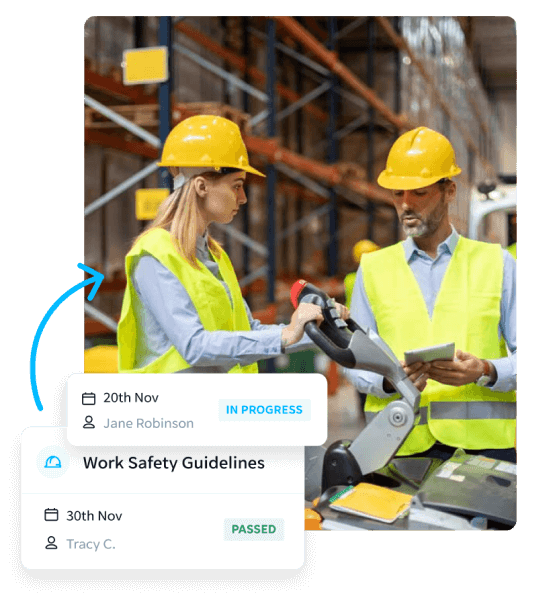
Reporting and analytics
The admin dashboard allows you to track your learners’ performance, including their course progress, compliance, completion rates, and comprehension. You can determine whether your experiential learning initiatives are working or not and identify the gaps that need to be addressed. Then, you can come up with solutions based on the data to improve your plans.
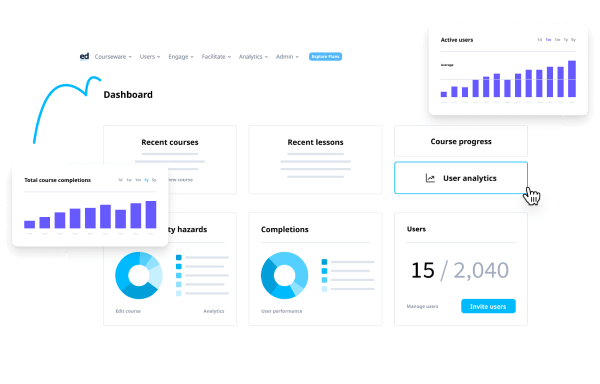
Enhance your experiential learning strategies with EdApp! Get started today, no credit card required.
Author
Ella Mar
Ella is a content writer for EdApp, an award-winning e-learning management system designed to help companies deliver high-quality workplace training. In her free time, she enjoys painting, reading, or playing with her cat.
